Is the current cosmetic industry a blessing, or should we take it as a lesson? Nowadays, cosmetics are dominated by the beauty industry. A vast sea of celebs release one beauty care line after another. It has become a multi-billion dollar industry that has lifted consumerism to a higher level. But what is actually in all these cosmetics that people are putting on their faces and in their hair? And what are the effects they have on our planet?
Before diving into the world of natural cosmetics and the reasons why we should use natural cosmetics, we take a look at how beauty products have come to play a significant role in our daily lives. If you think about makeup, you might not think of ancient civilisations. However, cosmetics have a rich history. Throughout our world, cosmetics have been used for various reasons like health benefits, religious ceremonies, and social status.

Ancient Egyptians were most likely the first civilization which started using cosmetic products. Stories go back to ancient Egyptians’ already using make-up by 10.000AC. All sorts of oils and natural creams were used, mainly to protect them against the scouring sun but for religious rituals as well.
Remarkable was that men and women would paint a combination of metal, lead, copper, ash and burnt almonds around their eyes – most likely the first version of kohl. The reason behind it was to fend off evil spirits. Interestingly enough scientists now discovered that this way of using makeup might have protected them against bacterial infections and other diseases. However, it’s hard to believe that putting lead and copper on your face is actually doing good to your skin. Heads up, natural cosmetics don’t contain copper and lead any more. Cleopatra, also known as the first devotee of red-lipstick, used lipstick that was made from crushed beetles and ants – creating strong pigmented tones.
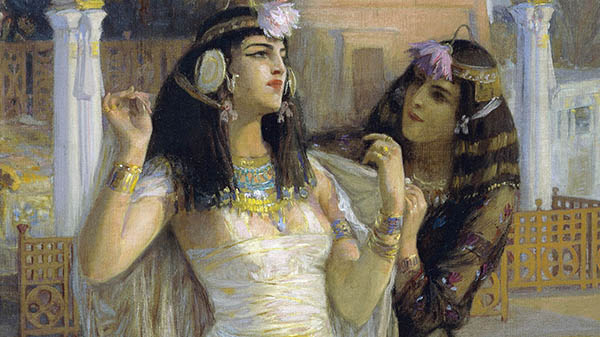
Thousands of years later, natural cosmetics were introduced into East Asian cultures. By 3000AC Chinese people would paint their fingernails with a mix of gelatin, beeswax and egg. The colours of their nails would represent a social class. The highest royals would have the luxury of painting their nails gold and silver. Members in a slightly lower class would paint them red. Lower social levels, unfortunately, were not allowed to paint their nails in bright colours and had to get around with more unadorned nails.
Of course, cosmetics were used in many more places throughout the world. Indian women, for instance, have been using henna since 300BC. In the Middle Ages, perfumes were imported on crusades from the Middle East and brought to kingdoms throughout Europe. A fun fact for our British readers – about 700 years ago when Queen Elizabeth I introduced dyed red hair as a fashion statement – society women in the British Kingdom smeared their faces with egg whites to make them paler.
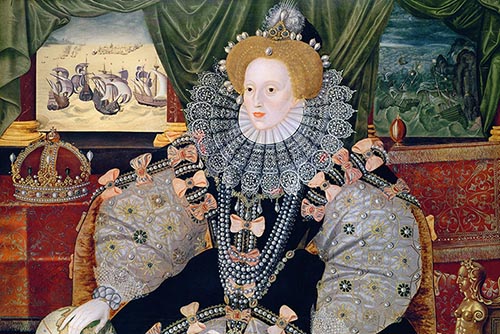
So how has the role of cosmetics changed? Well, in the era of kingdoms and empires, it was mainly royals wearing cosmetics. Somewhere down the line, there has been a shift from kings and queens setting cosmetic trends to Hollywood celebrities. Putting some egg yolk on your face to make you look pale won’t get you too many likes on Instagram. So influencers come into play. They are providing you with all sorts of tutorials on how to apply the makeup like your favourite celebrity.
One after the other star is introducing a new beauty line. To be honest with you, I have never really been spending too much time researching the number of beauty lines celebrities have provided us with. But, there’s probably more than you can imagine. The newest to join celebs entering the cosmetic industry is Hilary Duff with a collaboration with Nudestix. According to Magazine 34th Street, it’s ‘what dreams are made of’. Personally, I rather dream of beautiful white sandy beaches, but I’m sure there’s a big market out there for Hilary.

It’s not without a reason that one celebrity after the other jumps into the pool of the beauty industry. Kylie Jenner became the youngest billionaire with her beauty line Kylie Cosmetics. While writing this blog, my friend told me there was some scandal and that Kylie might have only been a self-proclaimed billionaire. Honestly, who really cares? I feel like I’m getting sucked too much into the world of celebs and their beauty lines.
Times have changed, from people burning some almonds, adding lead and copper to it and smearing it on your face to scrolling through thousands of influencers giving tutorials on the newest skincare products. It has, in fact, become a multi-billion dollar industry that had an estimated worth of 532 billion dollars in 2019.

So why are a lot of beauty lines harmful? Let’s take a look at one of the products of our self-proclaimed billionaire – Kylie Cosmetics. I’ve dug a little deeper into the ingredients of one of her bestsellers – the Skin Concealer. The thing about ingredients in cosmetic products is that they can be as confusing as reading about quantum mechanics. So most often, people have no idea what they are actually putting on their face. To apply a good rule of thumb: when your favourite celebrity uses it, it must be good! Maybe not really. let me show you why.
So what’s in Kylie’s Skin Concealer? Well, of course, we’ve got Dimethicone Crosspolymer, Polymethylsilsesquioxane, Copolymer and Isopropyl Titanium Triisostearate. It already took me a while to pronounce the names of these ingredients, so it comes to no surprise that most of us have no idea at all what they actually are. All these ingredients are synthetics that contain microplastics. They don’t necessarily have to be directly harmful to your skin. However, they are most definitely toxic to our planet as they don't break down. Also, when put in lip gloss and lipstick, there’s a big chance that you will ingest parts of it which is actually harmful. The icing on the cake in Kylie’s Skin Concealer is probably phenoxyethanol.

Phenoxyethanol is a preservative, and a synthetic ingredient that is often found in cosmetic products, about 24% of all beauty products contain Phenoxyethanol. It can be very harmful and is likely to cause skin and lung irritation, especially with higher doses. Doses of less than 1% are generally excepted. However, both the European Commission on cosmetic ingredients and the FDA have emphasised that phenoxyethanol is toxic, especially when applied to lips or around the mouth.
In case you are interested in discovering what ingredients your favourite brand is using, you can check out the product finder of Beat the Microbeads.
Luckily there are a lot of small companies who make lovely natural products. They are not just better for your skin and hair but also a blessing for the planet. Luckily, we also see some changes in the multi-billion dollar world of beauty products.
Actress Jessica Alba emphasises natural cosmetics with her brand the Honest Company. Her products consist of ingredients that are free of pollutants and microplastics. Australian supermodel Miranda Kerr founded Kora Cosmetics back in 2009. There is a strong focus within the company on using natural products that don’t contain microplastics and other synthetic preservatives.
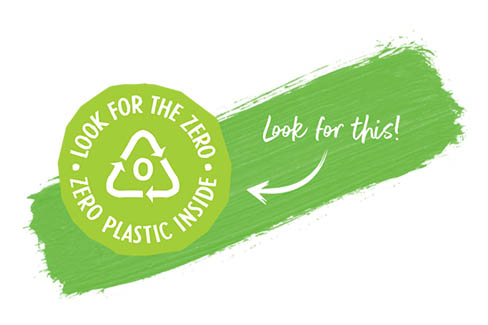
Are the Honest Company and Kora Cosmetics my best option then for natural beauty products? Not entirely, but it’s a hopeful sign that major brands are accentuating natural ingredients. Hopefully, they’ll be able to convince the Kylie Jenner’s of this world soon enough.
The reason why both Jessica Alba and Miranda Kerr can still improve their beauty lines is that they keep relying on plastic too much, as does 99% of the cosmetic industry. Luckily there is a small group of cosmetic pioneers who are making ground the past years. Lush is probably the most famous of them all. They are a UK-based cosmetic retailer, founded in 1995 by Mark Constantine. He realised that shampoo consisted mostly of water. By taking water out of the recipe, it was possible to make a shampoo bar and get rid of the plastic bottle.
If you genuinely want to reduce your plastic footprint, I would advise you to switch to solid cosmetics. Give your hair a break from the decades of chemicals they have endured and save our sea friends from these nasty microplastics. We still receive a lot of questions about solid cosmetics and especially about shampoo bars, so here are a few things you should know about them.
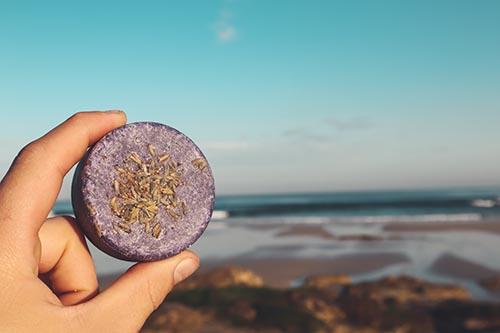
Shampoo bars are a natural alternative to liquid shampoo. By taking out the water from the recipe, the process becomes similar to making soap bars. The bars consist of natural plant oils, essential oils and butter. Giving your hair and scalp the nourishment it needs without all the chemicals.
Your hair might have to get used to shampoo bars the first few washes. See it as a detoxing process. Your hair might have gotten addictive to all these nasty chemicals. Usually, it takes 2 - 8 washes before your hair has gone through rehab, or in the shampoo bar community, also known as ‘the purge’ or ‘the waxies’. It takes some time because your scalp is balancing out the oil production. The good thing about getting the waxies? It only lasts for a short period and is the path to the healthiest hair you have ever had! If you don’t feel like doing a purge, you can speed up the process by a vinegar rinse or by using a solid conditioner bar.
The past years there have been remarkable developments in the cosmetic industry. An easy way to reduce plastic is by making a list of plastic items you use on a daily or weekly basis. We are listing a few with some perfect alternatives.
Commercial make-up, in short, can be described as (not to be too blunt here) crap for the environment. The trend of zero waste cosmetics is gaining a lot of popularity in recent years. And not without reason. Higher quality products that don’t cause any harm. If you have no idea where to start looking for them, here are a few tips.
Dirty Hippie Cosmetics is an Australian plastic-free cosmetic brand. They have a wide range of plastic-free and zero waste cosmetics. If you’re not living in Australia, you might want to think about the carbon offset for shipping. In case you are based in Europe, I would check out Vyana Zero Waste Beauty. Vyana was founded by Daisy, who set out to change the cosmetic industry with 100% natural beauty products. Her products are fair-priced, 100% cruelty-free and vegan. Another great option is FatandtheMoon. They have a large selection of hand-made cosmetic products, based on natural healers and herbalists. Besides making natural cosmetics, they also actively support several charities.

Another great benefit about natural cosmetics is that they often last much longer than their not so natural alternatives — body bars, conditioner bars and shampoo bars equal about three bottles. Count the waste you are saving with one bar! In the last few years, the trend for cosmetic bars is exploding. Companies that are producing them are popping up everywhere. My advice would be to try out a few. It’s the same as with regular shampoo. You might like one brand better than the other.
So what should you look into when buying a bar? Personally, I like bars that foam. But it could also just be a feeling as it’s not the foam that is rinsing your hair. But still, taking out the foam is somehow reducing my shower experience. If you have an answer to this, I’d love to hear about it in the comments. So what makes shampoo foam? Most often it’s SLS. In itself, SLS isn’t harmful. However, it mainly consists of palm oil. Look for sodium lauryl sulfate on the list of ingredients to see if your shampoo bar contains SLS. Lush has made a statement that they are currently actively working on finding a suitable alternative for SLS. Another great brand is Flow Cosmetics from Finland. Their bars are 100% natural; they are eco-certified and don’t contain SLS.
In our shop, you can find shampoo bars and body soap bars from the Dutch brand HappySoaps. We chose this brand because their bars are completely palm oil-free, contain no microplastics whatsoever, are vegan and have, of course, only been tested on humans.
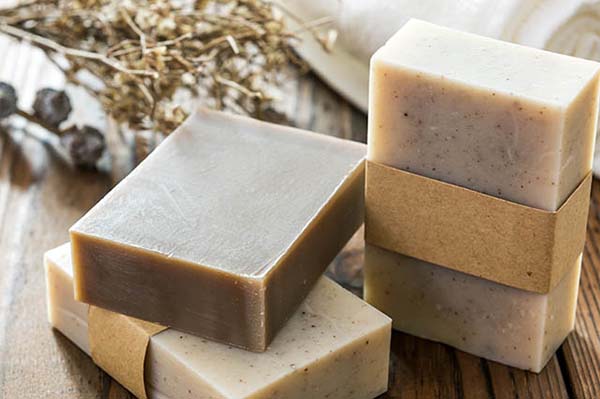
Another newcomer to the natural cosmetic industry is the natural deodorant. Have you ever wondered what you are putting on your armpits? Most likely at least some aluminium and several parabens (which can kill corals). Switching to natural deodorant, therefore, isn’t only better for your own body but also the environment. There are a few different options when you decide to ditch Dove, Nivea or Axe. Here at The Bamboovement, we tried deodorant powder. Which is natural as hell, but we had a hard time getting used to it. If you would like to try it out, I would go for The Ohm Collection.
We tested some natural rolls. Be careful to look at the ingredients. Many label themselves as all-natural but still contain synthetic preservatives or microplastics. In the end, we liked the smearable deodorant the most. It takes a few uses to get used to it, but once you’ve changed your mindset, you will love the natural touch of it. We offer a couple of different types now in our webshop. They are 100% natural, vegan and last 2 – 3 months.
Are you a true eco-warrior and do you have some spare time? Here is a cool blog post on how to make natural deodorant yourself.
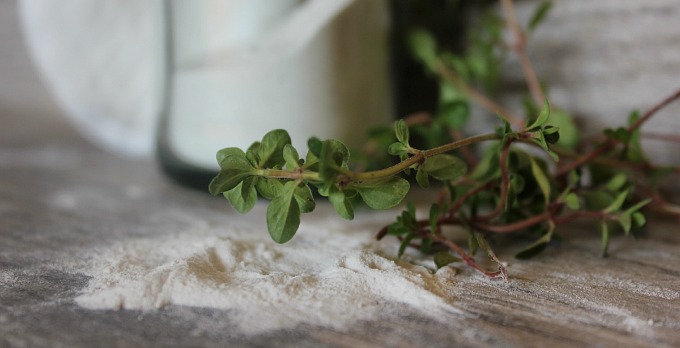
For pretty much any cosmetic item, we can find amazing plastic-free and organic alternatives. This doesn’t apply for razors though (yet). Pretty much the only option is safety razors. Peace with the Wild offers a variety of sustainable safety razors. Although they last long and the blades can easily be replaced – they can leave some nasty cuts. Especially in some sensitive areas...
The past year we have been working here at The Bamboovement on the world’s first plastic-free razor. We received a subsidy from the Dutch government to work on this project, and we are planning to release it within the next few months. Natural shaving bars are already among the products in our shop. The razor will consist of a 100% natural bamboo handle, and the cartridge of bamboo fibre. If you would like to stay up-to-date on the developments of our razor, you can subscribe to our newsletter.
As you can see, with a few simple daily changes, you can significantly reduce your plastic consumption. If you are interested to know more about your current plastic footprint, by clicking on this link you can find a useful tool to calculate your plastic consumption.
So to get back to our question. Why should you be using natural cosmetics? We can’t bury our head’s in the sand any more when it comes to current environmental challenges. By making some easy changes in our daily lives, we make a significant difference. We think it’s time to ditch the products from the Kylie Jenner’s of this world and get inspired once again by Cleopatra. However, please don’t put lead on your face.
Do you have other tips that you would like to share on how to reduce cosmetic waste? Leave a comment below! Also, in case you enjoyed reading this blog post, feel free to share it with your followers to inspire more people to switch to natural cosmetics.